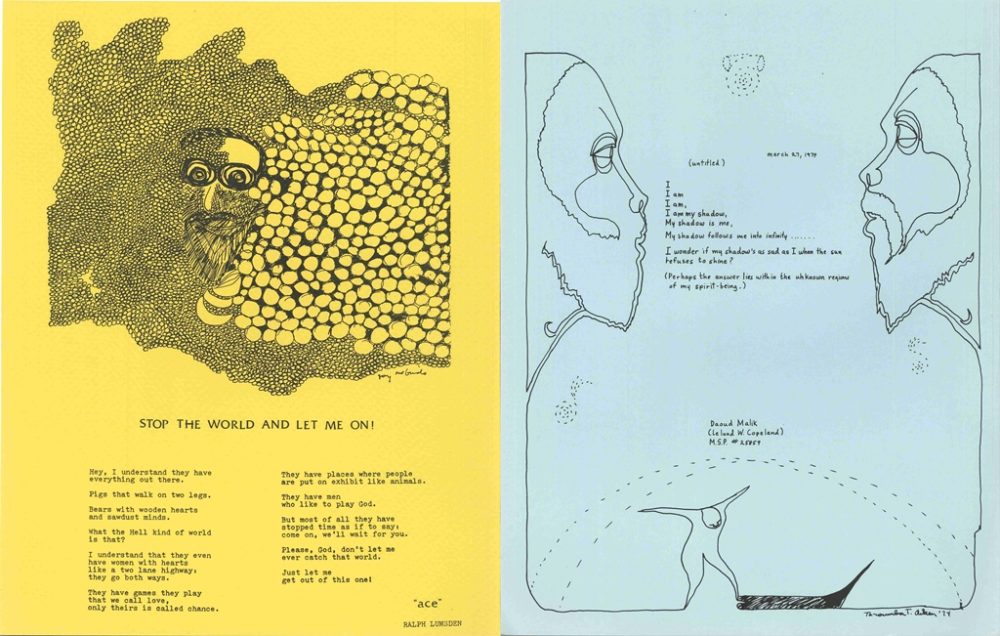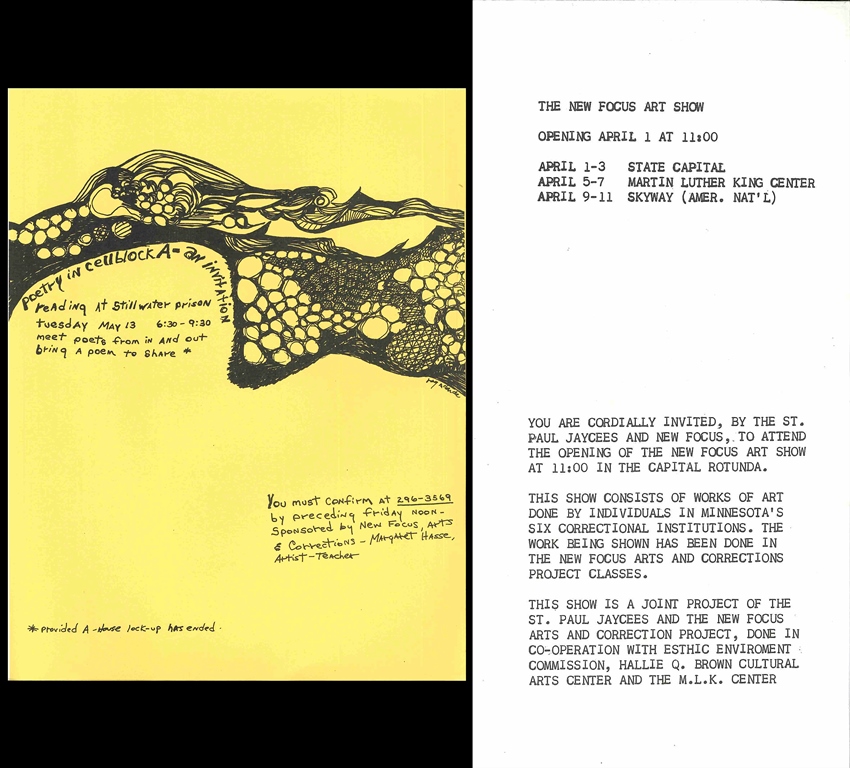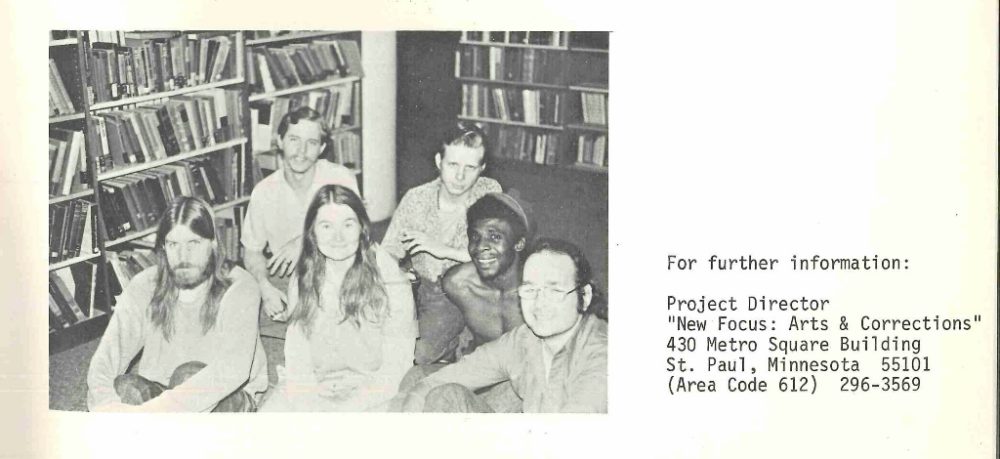By Pearl McClintock
Student Archives Assistant, Upper Midwest Literary Archives
Margaret Hasse is known for her candid poetry and down-to-earth point of view. I was first introduced to her work while processing her archival collection as part of the Prairie Poets and Press: Literary Lives of the Upper Midwest grant project currently underway in the Upper Midwest Literary Archives.
Among the hundreds of poems, teaching notes, and handwritten letters I found a small chapter of her life that caught my attention. From 1973 to 1975, Hasse was an artist-teacher for “New Focus: Arts & Corrections,” a workshop focused on bringing the arts into correctional programs. It was Hasse’s first job teaching creative writing and a particularly entertaining and uplifting part of this archival collection.
“New Focus: Arts & Corrections” was started as a program to provide alternative ways for inmates to channel their focus and process their experiences through art. The program operated in six correctional facilities across Minnesota and was funded in part by grants from the National Endowment for the Arts and the Minnesota State Art Council. Hasse taught at the workshops in Sauk Centre, Stillwater, Lino Lakes, and St. Cloud.
During Hasse’s workshops, her students explored work from Lewis Carroll, Emily Dickinson, and even fellow students. Hasse’s notes from the time include her goals for the course: she wanted to help students to find artistic expression, confidence in their work and themselves, and help them work through past experiences. Poems were exchanged, reviewed, and discussed openly.

Broadsides featuring artwork and poetry from the “New Focus: Arts & Corrections” program.
“New Focus” workshops produced several publications, performances, and gallery displays during Hasse’s time there. Sauk Centre created a magazine, performed a poetry reading at the Walker Art Center, and staged a play. Stillwater prison held a cellblock poetry reading and had two collections of poems published as well as several poems printed as broadsides.
While there were many projects going on in each individual workshop, “New Focus” hosted a touring art show featuring work from all six correctional institutions opening at the State Capital, then continuing on to the Martin Luther King Center, and closing in the Skyway. By showcasing the work they created, the art show helped shine a positive spotlight on the students.

Left: Invitation to the “Poetry in Cellblock A” reading at the Stillwater Penitentiary. Right: Invitation to the “New Focus Art Show” starting at the State Capital and ending at the Skyway.
Margaret Hasse approached her students with respect and encouragement, and the students in each of the workshops she lead looked up to her. Hasse’s papers include several positive comments from the students about their teacher, whom they called “Margo.” In course evaluations, many cited that they enjoyed the class, the teacher, and found something they had talent in and could put to good use.

Image of Margaret “Margo” Hasse with students from the Stillwater Penitentiary, published in the “New Focus” student poetry anthology titled Spectrum (1975).
In a letter addressed to the director of the “New Focus” program from Hasse’s students at the Stillwater State Penitentiary, the students expressed their sadness that the workshop was coming to a close and wanted it to be extended. They shared how prison was “not the easiest place to live” but Hasse’s presence was pleasant and inspiring. The director at the time, Merle Segal, replied saying that the course “somehow or other” would continue as a result of their interest but wasn’t certain if Hasse would be available to come back due to her upcoming workshop in Sauk Centre.
I have not uncovered if Hasse was able to return to Stillwater, but Hasse’s papers do contain the publications that came out of the Stillwater Penitentiary poetry program. These works show the beauty, passion, and creativity the students found within themselves over the course of the workshops.
Funding for Prairie Poets and Press
Prairie Poets and Press has been financed in part with funds provided by the State of Minnesota from the Arts and Cultural Heritage Fund through the Minnesota Historical Society. The Minnesota Historical and Cultural Grants Program has been made possible by the Arts and Cultural Heritage Fund through the vote of Minnesotans on November 4, 2008. The Arts and Cultural Heritage Fund raises millions of dollars each year to support the artists and cultural heritage institutions (such as historical societies, libraries, and museums) that keep our state great, our citizens thoughtful, and our community thriving.
—Pearl McClintock is a student archives assistant working in the Upper Midwest Literary Archives. To learn more about the Upper Midwest Literary Archives, please visit www.lib.umn.edu/mss.
The materials featured in this article are from the Margaret Hasse papers in the Upper Midwest Literary Archives at the University of Minnesota.




